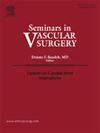Large language models and artificial intelligence chatbots in vascular surgery
IF 2.4
3区 医学
Q1 PERIPHERAL VASCULAR DISEASE
引用次数: 0
Abstract
Natural language processing is a subfield of artificial intelligence that aims to analyze human oral or written language. The development of large language models has brought innovative perspectives in medicine, including the potential use of chatbots and virtual assistants. Nevertheless, the benefits and pitfalls of such technology need to be carefully evaluated before their use in health care. The aim of this narrative review was to provide an overview of potential applications of large language models and artificial intelligence chatbots in the field of vascular surgery, including clinical practice, research, and education. In light of the results, we discuss current limits and future directions.
血管外科中的大型语言模型和人工智能聊天机器人
自然语言处理是人工智能的一个子领域,旨在分析人类的口头或书面语言。大型语言模型的开发为医学带来了创新的视角,包括聊天机器人和虚拟助手的潜在用途。然而,在医疗保健领域使用这些技术之前,需要仔细评估其优点和缺陷。本综述旨在概述大型语言模型和人工智能聊天机器人在血管外科领域的潜在应用,包括临床实践、研究和教育。根据研究结果,我们讨论了目前的局限性和未来的发展方向。
本文章由计算机程序翻译,如有差异,请以英文原文为准。
求助全文
约1分钟内获得全文
求助全文
来源期刊
CiteScore
3.50
自引率
4.00%
发文量
54
审稿时长
50 days
期刊介绍:
Each issue of Seminars in Vascular Surgery examines the latest thinking on a particular clinical problem and features new diagnostic and operative techniques. The journal allows practitioners to expand their capabilities and to keep pace with the most rapidly evolving areas of surgery.

 求助内容:
求助内容: 应助结果提醒方式:
应助结果提醒方式:


